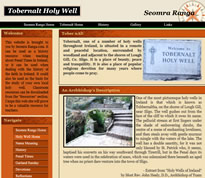 I was very excited on Tuesday when my teacher handed me “Kilmainham Gaol” by Andrew O’ Connor, to read and review. I love history and really enjoyed studying the stories of the famine and the 1916 rising which had strong links to the Gaol.
I was very excited on Tuesday when my teacher handed me “Kilmainham Gaol” by Andrew O’ Connor, to read and review. I love history and really enjoyed studying the stories of the famine and the 1916 rising which had strong links to the Gaol.
This book is a reflection of the many years that Kilmainham Gaol was in operation as a prison. It tells the story from the beginning of the Gaol, its need to be built to address high levels of crime in Ireland and details the crimes that could have you imprisoned there. The book covers how men, women and even children were treated inthe prison in those days. It tells how overcrowding lead to the sending of prisoners who often had committed petty crimes to penal colonies on the other side of the world.
One of the parts I liked the most of the book was the personal stories it told of some of the prisoners who spent time in Kilmainham Gaol from Robert Emmett to the last prisoner Eamon De Valera. Some of their stories were to end in death sentences while some were released.
I really enjoyed this book. It was far more enjoyable to read than the history books in school would be as it gave such a sense of what it was like there back in its day. Also it covered so much more about the Gaol than the history books do and made it a more significant place in history in my opinion. The illustrations were very good in the book, in fact they well matched the visions you built up in your head from reading the text so I think the author and the illustrator worked really well together.
I have never been to Kilmainham Gaol but after reading this book, I am dying to visit it and view The Devils of Kilmainham stone over the entrance and to see the Stone Breakers yard where so many of the rebel leaders of the 1916 Rising were shot.
By Cian, 5th Class, Cloghans Hill N.S., Co. Mayo
“Kilmainham Gaol” by Andrew O’ Connor and illustrated by Derry Dillon, published by Poolbeg Press, is now available to purchase for €4.99
Disclaimer: This book was provided by the publisher, Poolbeg Press, free of charge to Seomra Ranga for the purposes of this review





